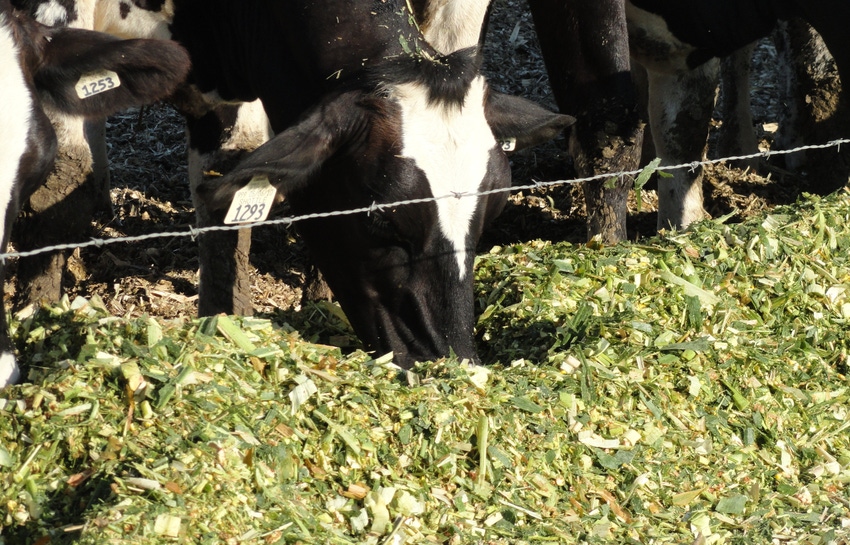
If you want to get the most from a grower ration based on corn silage, you'll need to add the right amount and type of protein.
In fact, you can actually set up a programmed growing/backgrounding system on silage to produce whatever performance you want, from small gains to possibly four pounds average daily gain, says Andrea Watson, University of Nebraska animal scientist.
Several research trials in Nebraska and elsewhere have shown one of the most important factors in boosting gain, for those who want to, is to have a large proportion of the protein be rumen undegradable protein (RUP), also known as rumen bypass protein.
Watson explains protein used for growth by calves, and therefore critical in growing diets, is composed of feed protein that escapes degradation in the rumen (RUP) but is available in the lower intestinal tract, along with microbes that pass out of the rumen and also are a good source of protein for the growing calf. The latter form of protein is called microbial crude protein (MCP) by nutritionists.
Of course, to calculate growing rations you must know:
1. The protein supplied by the diet
2. The protein requirement of the calf
Watson says this is a neat trick, since the protein in corn silage is actually hard to accurately quantify.
She explains lab techniques designed to measure RUP are specific to forages or concentrates, while corn silage is a blend of both.
Further, Watson says, the moisture content of the silage at harvest and the amount of time the silage has been stored continually impact the degradability of the protein. The forage portion of corn silage has very little RUP, most of its protein is rapidly degraded in the rumen, and much of the protein that does escape rumen degradation is not digestible in the lower tract, she explains.
Watson adds that in the first 30 days after ensiling, as moisture content increases and the length of the ensiling period increases, RUP content decreases, which means the protein becomes more rumen degradable.
A look at Table 1 shows this variability in RUP. For example, 24% dry-matter, high-moisture corn (which would be very similar to the grain portion of corn silage) has 58.4% RUP at 28 days, but 41.3% RUP at 364 days. And 30% dry-matter, high-moisture corn has 31.9% RUP at 28 days but only 19.4% RUP at 364 days. Watson says they are continuing this work with high moisture corn.
Another anomoly: the microbial efficiency value is actually lower than listed in older NRC data. In the 2016 NRC data it is adjustable -- Watson recommends using 11.5% MCP efficiency for corn silage growing diets.
A look at the second table accompanying this story will show you the linear relationship between RUP content of a silage-based diet for stocker cattle and average daily gain.
The next question, then, is what protein sources offer the best and highest percentages of RUP, or bypass protein, to complement the silage?
Few options exist, Watson says. One of the best is distillers grains with solubles (DGS) which typically tops 63% RUP. Others include meat and bone meal, poultry byproducts such as feather meal, blood meal and fish meal, with this group measuring from 37% to 63% RUP.
To read Watson's paper you may download the proceedings from the conference.
About the Author(s)
You May Also Like




